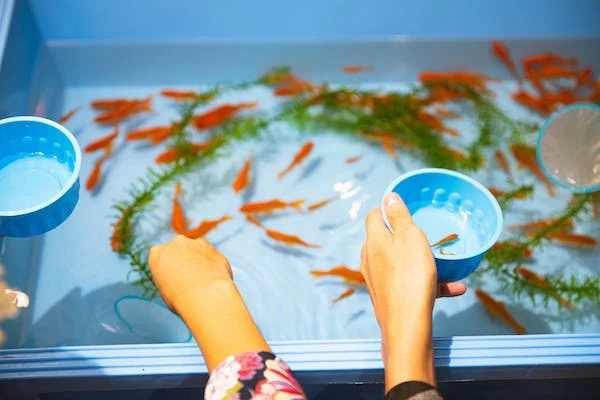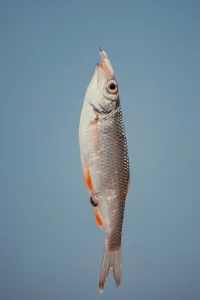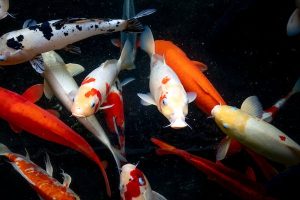
Tiny Fishing For Rural Development

Tiny Fishing: Tips and Techniques for Catching Small Fish. Tiny fishing is a popular and engaging activity that allows individuals to enjoy the thrill of catching fish in a small and intimate setting. As the name suggests, tiny fishing involves catching small fish in small bodies of water, such as ponds, streams, and lakes. This type of fishing is perfect for beginners, children, and those who want to experience the joy of fishing without the need for expensive equipment or extensive training.
The essence of tiny fishing lies in the simplicity of the activity. Unlike other forms of fishing, which require specialized gear and extensive knowledge about fish behavior, tiny fishing only requires a basic fishing rod, some bait, and a willingness to learn. The goal of tiny fishing is to catch as many fish as possible within a limited amount of time. This can be done by using different types of bait, changing the depth of the fishing line, and adjusting the casting technique.
The Essence of Tiny Fishing
Tiny fishing is a unique and satisfying experience that takes patience, skill, and a love for the outdoors. At its core, tiny fishing is about catching small fish using specialized equipment and techniques. But it’s much more than that. It’s about immersing oneself in nature, learning the nuances of different bodies of water, and appreciating the beauty of the world around us.
One of the key aspects of tiny fishing is using the right equipment. This includes a tiny fishing rod, lightweight fishing line, and small hooks. The rod should be short and flexible, allowing for precise casting and control. The line should be thin and strong, able to withstand the weight of small fish without breaking. And the hooks should be small and sharp, easily penetrating the mouths of tiny fish.
Another important aspect of tiny fishing is technique. Since small fish are easily spooked, it’s important to approach the water quietly and cast with precision. The bait should be presented in a natural way, using small amounts and keeping the tip of the rod close to the surface of the water to detect bites. When a fish bites, it’s important to be quick to set the hook, as small fish bites are often hard to notice.
In addition to equipment and technique, tiny fishing is also about enjoying the outdoors and appreciating the beauty of nature. Whether fishing in a peaceful pond, a bustling dockside, or a mysterious underwater cave, each location offers a unique and exciting challenge for players to tackle. And with its colorful and cute graphics, tiny fishing is a joy to play for people of all ages and skill levels. Overall, the essence of tin fishing is about more than just catching small fish. It’s about immersing oneself in the natural world, learning new skills, and appreciating the beauty of the world around us.
Equipment for Tiny Fishing
Tiny fishing requires specialized equipment to catch small fish. Here are some essential items to consider when gearing up for your next tiny fishing adventure. Choosing the Right Rod; when it comes to tin fishing, a small rod is essential. Look for a rod that is lightweight, sensitive, and flexible. A shorter rod is ideal for tiny fishing, as it allows for greater precision when casting and reeling in small fish.
Selecting the Ideal Reel
A spinning reel is the best choice for tiny fishing. Look for a reel that is lightweight and has a smooth drag system. A reel with a high gear ratio is also recommended, as it allows for faster retrieves and better control over your catch. Essential Tackle; In addition to a rod and reel, there are a few other pieces of tackle that are essential for tiny fishing. These include:
Hooks: Choose hooks that are small and sharp. Size 14 to 20 hooks are ideal for tiny fishing, Line: Use a light line that is between 2 and 6 pounds test. This will allow you to cast further and feel even the slightest nibble on your line, bait: Live bait is the best choice for tiny fishing. Look for small worms, grubs, or insects that are native to the area you are fishing in. By selecting the right equipment for tiny fishing, you can increase your chances of catching small fish and have a more enjoyable fishing experience.
Techniques in Tiny Fishing
Tiny fishing is a style of fishing that involves catching small fish, such as minnows or sunfish. It requires specialized equipment, such as a small rod and reel, lightweight line, and tiny hooks. Here are some techniques that can be used in tiny fishing.
Casting Techniques
Casting in tin fishing requires a different approach than traditional angling methods due to the size of the fish targeted. Casting should be done with a gentle flick of the wrist, with the aim of landing the bait in the desired location. A common technique is to use a small bobber to keep the bait at the right depth. The bobber should be set so that it floats just above the water’s surface. This will allow for easy visibility of any bites.

Retrieval Methods
Retrieval methods in tiny fishing are also different from traditional angling methods. One popular technique used by many anglers is micro jigging. This involves using very small jigs (often between 1/64th and 1/16th ounce) with twitches of the rod tip to attract tiny fish. Another technique is to use a small spinner or spoon. These lures are designed to spin or flash in the water, which can attract the attention of small fish.
When retrieving the bait, it is important to do so slowly and steadily. The bait should be moved in short, jerky motions to mimic the movement of small insects or other prey. If a fish bites, it is important to set the hook quickly but gently to avoid tearing the tiny hook out of the fish’s mouth. Overall, tin fishing requires a different approach than traditional angling methods due to the size of the fish targeted. By using specialized equipment and techniques, anglers can increase their chances of success in this challenging but rewarding style of fishing.
Choosing the Perfect Location
When it comes to tin fishing, choosing the right location is crucial for a successful outing. Different species of tiny fish can be found in different types of water bodies, so it’s important to know where to look. Here are some tips for choosing the perfect location for tiny fishing. This industry of small fishing is something of its own kind, to carry it in the rural areas becomes much difficult as it needs huge investment which in most cases it is not found over there.
Freshwater Spots
Freshwater spots are a great place to start for tin fishing. Small streams, creeks, and ponds are ideal habitats for tiny fish, and they can be found in abundance in these areas. When searching for freshwater spots, keep an eye out for areas with plenty of vegetation, rocks, and other types of cover that tiny fish like to hide in.
Saltwater Spots
Tiny fish can also be found in saltwater areas, but the types of fish you’ll find will be different than in freshwater spots. When looking for saltwater spots for tiny fishing, pay attention to the tide, current, and water temperature. Some tiny fish prefer warmer water, while others like cooler temperatures. Remember to always check local fishing regulations before heading out to any body of water, and be respectful of the environment and other anglers. By choosing the right location for tiny fishing, you’ll increase your chances of catching some of the best fish in the game.
Understanding Fish Behavior
Successful tiny fishing requires a solid understanding of fish behavior. Fish are affected by various factors such as water temperature, weather, and food availability, and these factors can influence their behavior. Knowing how to interpret fish behavior can help anglers increase their chances of catching fish.
Fish behavior can be influenced by a variety of environmental factors. Water temperature, for example, can affect how active fish are. In general, fish tend to be more active in warmer water. Weather can also play a role in fish behavior. On cloudy days, fish may be more likely to swim closer to the surface, while on sunny days, they may be more likely to stay in deeper water to avoid the heat. Fish behavior can also be influenced by food availability. Fish will typically follow their food source, so it’s important to know what they are feeding on. Using the right bait that mimics their natural food source can increase the chances of catching fish. Additionally, fish may be more active during certain times of the day when their food source is most abundant.
Finally, fish behavior can be influenced by their natural instincts. Some fish may be more aggressive and territorial, while others may be more passive. Understanding the behavior of the specific type of fish being targeted can help anglers choose the right bait and fishing technique. Overall, understanding fish behavior is crucial for successful tiny fishing. By taking into account factors such as water temperature, weather, food availability, and natural instincts, anglers can increase their chances of catching fish.
Safety Measures in Tiny Fishing
Tiny fishing can be a fun and rewarding activity, but it is important to take safety measures to ensure a successful and safe experience. Here are some safety measures that should be taken when engaging in tiny fishing.
Wear appropriate clothing
Wearing appropriate clothing is important when engaging in tiny fishing. It is recommended to wear lightweight, breathable clothing that will keep you cool and comfortable. Wearing a hat and sunglasses can also help protect your face and eyes from the sun. As argued before, this is a career that has its own ethics and procedures to become a successful career.
Use appropriate equipment
Using appropriate equipment is essential when tiny fishing. It is recommended to use a small rod and reel, lightweight line, and tiny hooks. It is also important to use a small hook to avoid injuring the fish. Using a hook that is appropriate for the size of the bait you are using and the size of the fish you are targeting is also important.
Choose a safe location
Choosing a safe location is important when engaging in tiny fishing. Look for shallow, clear water with lots of vegetation. Avoid areas with strong currents, deep water, or underwater obstructions. This is an industry and so one needs to take into account all the information that is provided by the experts. This is a career that could be a source of income to rural and urban areas as well. To make it a real source of income training is necessary.
Handle fish with care
Handling fish with care is important to ensure their survival. It is recommended to use a landing net to safely remove the fish from the water. Avoid touching the fish with bare hands as this can damage their protective slime layer. Use pliers or a hook remover to safely remove the hook from the fish’s mouth. This career requires some kind of compassionate to the fish, yes it is a business but needs to have in mind the ecosystem as one carries out the work.
Follow fishing regulations
Following fishing regulations is important to protect the environment and ensure the sustainability of fish populations. Check local regulations before engaging in tiny fishing, and follow catch and release guidelines whenever possible. By following these safety measures, you can enjoy a safe and successful tiny fishing experience.
Conservation and Ethical Considerations
Tiny fishing, like any other fishing activity, has the potential to impact the environment and fish populations. Therefore, conservation and ethical considerations are important when engaging in tiny fishing. One of the main conservation considerations is to ensure that the fish populations are not overexploited. Overfishing can lead to the depletion of fish stocks, which can have a significant impact on the ecosystem and the livelihoods of those who depend on fishing. To prevent overfishing, tiny fishing enthusiasts should follow local regulations and guidelines regarding fishing seasons, bag limits, and size limits.
Another important conservation consideration is to avoid catching non-target species. Tiny fishing enthusiasts should use appropriate gear and techniques to minimize bycatch, which is the accidental capture of non-target species. Bycatch can result in the death of non-target species, which can have significant ecological consequences. In addition to conservation considerations, ethical considerations are also important in tiny fishing. Ethical considerations involve treating the fish with respect and minimizing their suffering. Tiny fishing enthusiasts should avoid causing unnecessary harm to the fish by using appropriate gear and techniques. For example, using barbless hooks can reduce the amount of damage caused to the fish.
Furthermore, tiny fishing enthusiasts should consider the impact of their fishing activities on the ecosystem. For instance, they should avoid fishing in sensitive areas where fish populations are already under stress. They should also avoid using live bait, which can introduce non-native species into the ecosystem. Overall, conservation and ethical considerations are essential when engaging in tiny fishing. By following local regulations and guidelines, using appropriate gear and techniques, and treating the fish with respect, tiny fishing enthusiasts can minimize their impact on the environment and contribute to the sustainability of fish populations.
Frequently Asked Questions
How do I play Tiny Fishing?
To play Tiny Fishing, players need to catch small fish using minimal equipment. Unlike traditional fishing, where anglers use baitcasters or spinning reels, tiny fishing requires only a simple stick, line, and hook. Players can catch a variety of small fish species by selecting the right bait and fishing in the right location.
What is the purpose of the aquarium in Tiny Fishing?
The aquarium in Tiny Fishing serves as a place where players can keep and observe the fish they catch. Players can also earn coins by selling the fish they catch in the aquarium.
What can I do with the coins in Tiny Fishing?
Players can use coins in Tiny Fishing to purchase new equipment, bait, and other items that can help them catch more fish. Coins can also be used to unlock new locations and features in the game.
What are some hacks for Tiny Fishing?
There are several hacks that players can use to improve their chances of catching more fish in Tiny Fishing. Some of these include using the right bait for the species of fish they are trying to catch, fishing in the right location, and upgrading their equipment to improve their chances of success.
What is the maximum depth in Tiny Fishing?
The maximum depth in Tiny Fishing varies depending on the species of fish being caught and the equipment being used. Generally, tiny fishing is done in shallow waters, but some species of fish can be caught at deeper depths.
What is Monkey Mart in Tiny Fishing?
Monkey Mart is a store in Tiny Fishing where players can purchase new equipment, bait, and other items that can help them catch more fish. Players can also earn coins by selling the fish they catch at Monkey Mart.









Leave a Reply